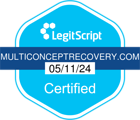Oxycodone is used to relieve pain and is prescribed to address moderate to severe levels of pain. It can be prescribed alone or used in combination with other pain relievers in tablet form and may be named:
- OxyContin – oxycodone; both immediate and controlled release formulations.
- OxyIR and OxyFast – oxycodone immediate release.
- Percodan – oxycodone and aspirin.
- Percocet – oxycodone and acetaminophen.
Oxycodone originates back to the opium poppy and, although modified in a lab, oxycodone has similar effects on people as other legal and illegal opioids. As such, oxycodone is capable of delivering a powerful high to those who abuse it and even those who do not which people may describe as having a strong “calling” back to use the substance. This powerful high also contributes to a high number of people who unintentionally begin abusing it as well.
Addiction is also highly likely with oxycodone because even when people unintentionally begin using the substance as prescribed “tolerance” and “dependence” develops. Those addicted to prescription opiates are 40 times more likely to seek out and develop a habit of using illegal substances such as heroin.
The Effects of Oxycodone in Medical Use
- Less pain.
- Feelings of euphoria.
- Release of muscular tension.
- Mental calm or relaxation.
Dangerous Side Effects of Oxycodone
- Slowed or difficult breathing.
- Constipation.
- Nausea and vomiting.
- Confusion.
- Alternating periods of sleep and consciousness.
Signs of an Oxycodone Overdose
- Constricted pupils, non-reactive to light.
- Periods of extreme sedation; difficult to wake.
- Lack of responsiveness (even to painful stimuli).
- Respiratory arrest.
- Cyanotic, or bluish appearance to lips, fingernails.
As dopamine is an important neurotransmitter and is in part responsible for the effects of the drug, it is also associated with the brain’s reward system. Once the substance is consumed and activates the brain’s “feel good” system people attempt to revisit that same feeling, which may or may not occur depending on the person’s tolerance level. This is another key ingredient in the formation of an addiction.
How Does Addiction Come Into Play? What are the Signs of Addiction?
Addiction is the outcome that many of us see in the behavioral health industry today with an opiate. People addicted may exhibit the following behaviors:
- Dishonesty and stealing to obtain more drugs
- Things that interested them no longer are important and a personality shift
- Neglecting responsibilities while devoting more time to using and obtaining oxycodone.
- Try to acquire more of the substance by providing false medical histories to medical professionals, forging prescriptions or visiting multiple doctors to receive multiple prescriptions.
- Continue use even when negative consequences are inevitable
Oxycodone Abuse Treatment
As a result of the extremely uncomfortable withdrawal symptoms of oxycodone we highly recommend a good, ethical detox facility where you know your loved one will be treated with dignity and respect in a safe and stable environment.
Detoxification is the purposeful reduction of oxycodone in the body. This is often completed in an inpatient setting (acute or subacute) so that medical professionals can tend to the patient—ensuring safety and comfort. During the detox process, other medications may be prescribed to reduce the discomfort of the withdrawal and cravings. Many times if not medicated appropriately upon admission the discomfort, anxiety, and cravings become so strong that the client abandons treatment or leaves against treatment advice.
When detox is complete, patients can be referred to a number of treatment options such as:
- Residential rehabilitation.
- Outpatient treatment.
- Mental health/dual diagnosis treatment.
Residential programs (RTCs) are an excellent option for people needing to remain in a controlled environment with structure and supervision 24/7. Usually, at the RTC level of care, like Multi Concept Recovery, clients attend groups throughout the day on various topics to help introduce them to a program regiment preparing them for the next level of care. Program lengths vary for this level of care anywhere from four weeks to twelve weeks. At the outpatient level of care, clients attend groups receive individual therapy and counseling services.
Outpatient treatment services can involve three different levels of care including a Partial Hospitalization Program (PHP), Intensive Outpatient (IOP) and Outpatient treatment (OP). These levels of care provide more convenience to the client as they are able to reside at home and attend the program services on their designated times and days. This is also more convenient for professionals who need to work daily and may be able to attend an evening IOP track.
Multi Concept Recovery is here for you. We’ve been there ourselves and understand the process of addiction and recovery. Call us today at 818-433-9500 and take the first step towards a new life.
